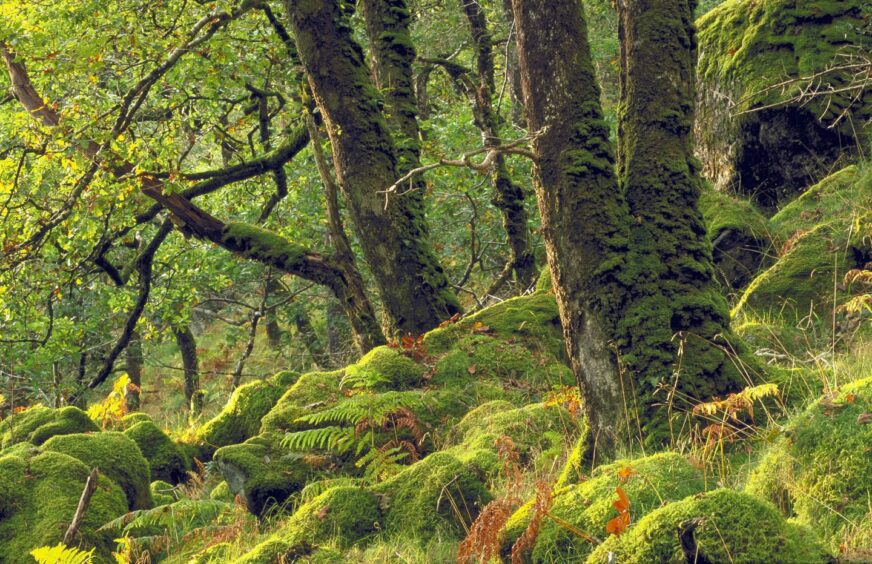Tree planting is a vital tool in protecting Scotland’s environment. The climate emergency means greater urgency is needed to meet its challenges and we can’t rely on government alone to finance the changes.
-
Some Press and Journal online content is funded by outside parties. The revenue from this helps to sustain our independent news gathering. You will always know if you are reading paid-for material as it will be clearly labelled as “Partnership” on the site and on social media channels.
This can take two different forms.
“Presented by”
This means the content has been paid for and produced by the named advertiser.
“In partnership with”
This means the content has been paid for and approved by the named advertiser but written and edited by our own commercial content team.
With this in mind, NatureScot, Scotland’s nature agency, is looking into various ways to involve business in nature restoration. This month, NatureScot and partners have launched a finance investment pilot. It could mobilise £2 billion in landscape-scale restoration of native woodland, create new jobs and support rural communities across all of Scotland. This £2billion of investment in expanding woodland cover could create around 185,000 hectares of native woodland in Scotland and sequester 28 million tCO2e over the next 30 years.
The partnership with UK private bank Hampden & Co, Lombard Odier Investment Managers and global impact firm Palladium is a national first in ambition and scale. It is an important step in positioning Scotland as a world leader in nature restoration through natural capital investment.
The first pilot scheme – starting this spring – is centred on the Wild Heart Borders Forest Trust project in Southern Scotland. It could see the planting of around 30,000 hectares of new native woodland. There is the potential for between £200 and £300 million of private investment and around 6 million tonnes of carbon sequestration.
NatureScot is keen that people are given all the facts about the project.
As Brendan Turvey, the Low Carbon Project Manager at NatureScot, says: “This is not about buying land. It is about working with existing land managers to create woodland and restore peatland on their existing land. It’s about diversifying incomes and working with land managers to plant more trees.”
So what are the principal benefits of the scheme?
Expanding woodland cover can boost Scotland’s rural communities
NatureScot hopes expanding woodland cover in Scotland will create more recreational access and attract visitors to the area. This in turn will provide opportunities for local businesses and create jobs. Tree planting can create woodland that is a haven for wildlife but it will also fuel the economy.
Brendan says: “We want to create new woodlands that people want to go and visit because they’re thriving with wildlife. They’re great places to take the kids, go for a walk or ride your bike.”
Diversification will present opportunities for farmers
Expanding the woodland cover of Scotland should create more jobs on the farms themselves, as well as generate a new income stream from the sale of carbon credits. The scheme can work alongside regenerative agriculture, in which sheep and other livestock move around the farm more often and which is more labour intensive. Ideally there will be more people working on the farms managing similar numbers of livestock but managing them in a different, lower carbon way.
There should be opportunities in other areas too. Brendan points to a farmer who is refurbishing a property to accommodate visitors to the area. He’s also renting a property to the South of Scotland Golden Eagle Project. That diversification creates work as he needs more people for roles such as managing the properties.
Tree planting is about ethical investment and protecting our future
The scheme will be good for people and communities. NatureScot will work closely with land managers and local partners to deliver high integrity, responsible investment in new and productive woodlands which lock up carbon. Every project will deliver against Scottish Government’s Interim Principles for Responsible Investment in Natural Capital. Only UK companies with credible net zero carbon plans will be able to buy carbon credits. This ensures the integrity of any tree planting in Scotland and its benefit to the local area. The investor can also prove they are channelling money into an ethical product.
Brendan says: “The projects will work to the highest standards, so investors can be assured that they are helping Scotland’s environment. They’ll be able to see the results of their carbon credits on the ground with flourishing forests and wildlife.”
NatureScot’s drive to expand woodland in Scotland is vital to both the future of the environment and to the health of rural economies. Now is the time to act.

